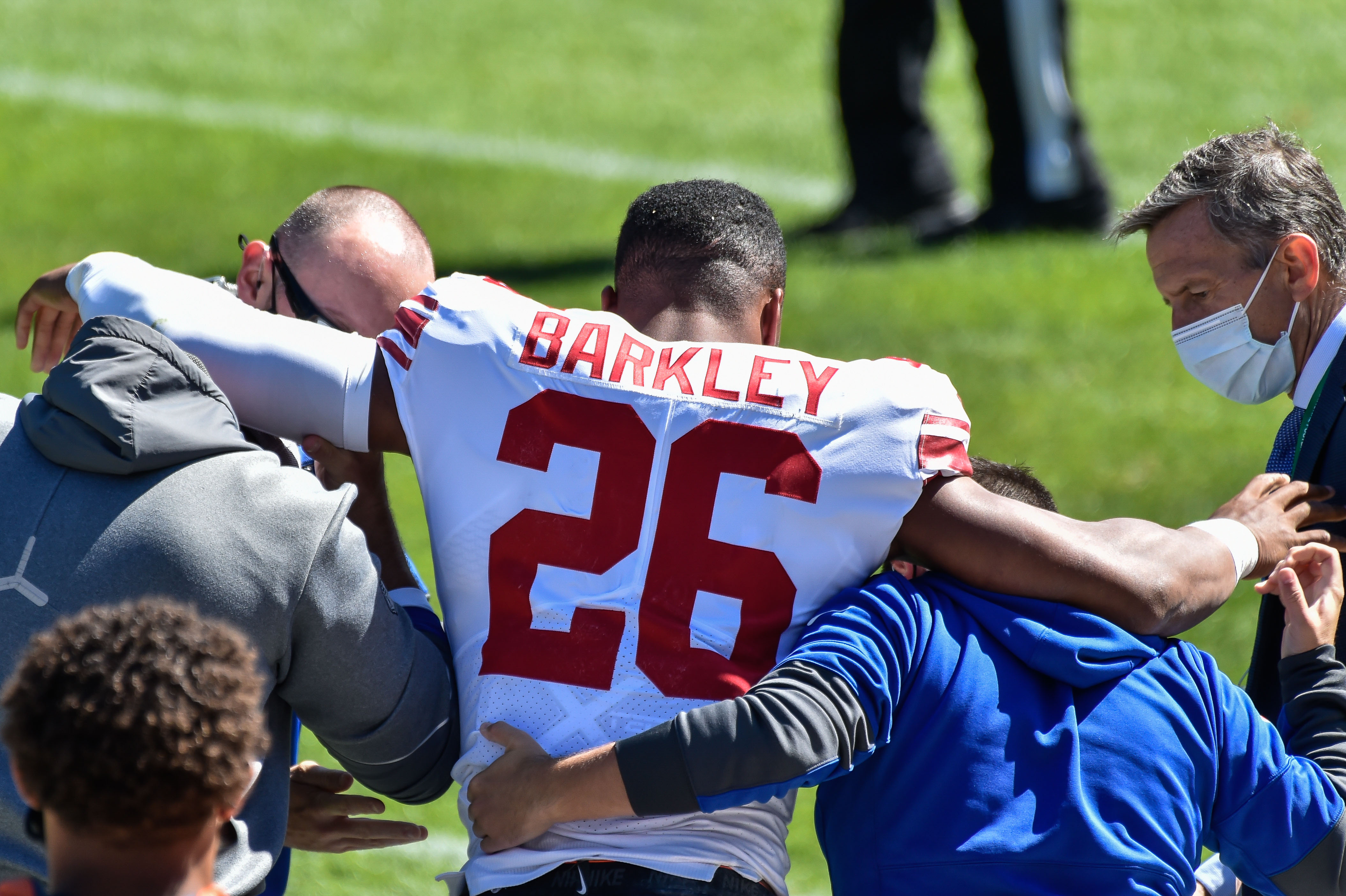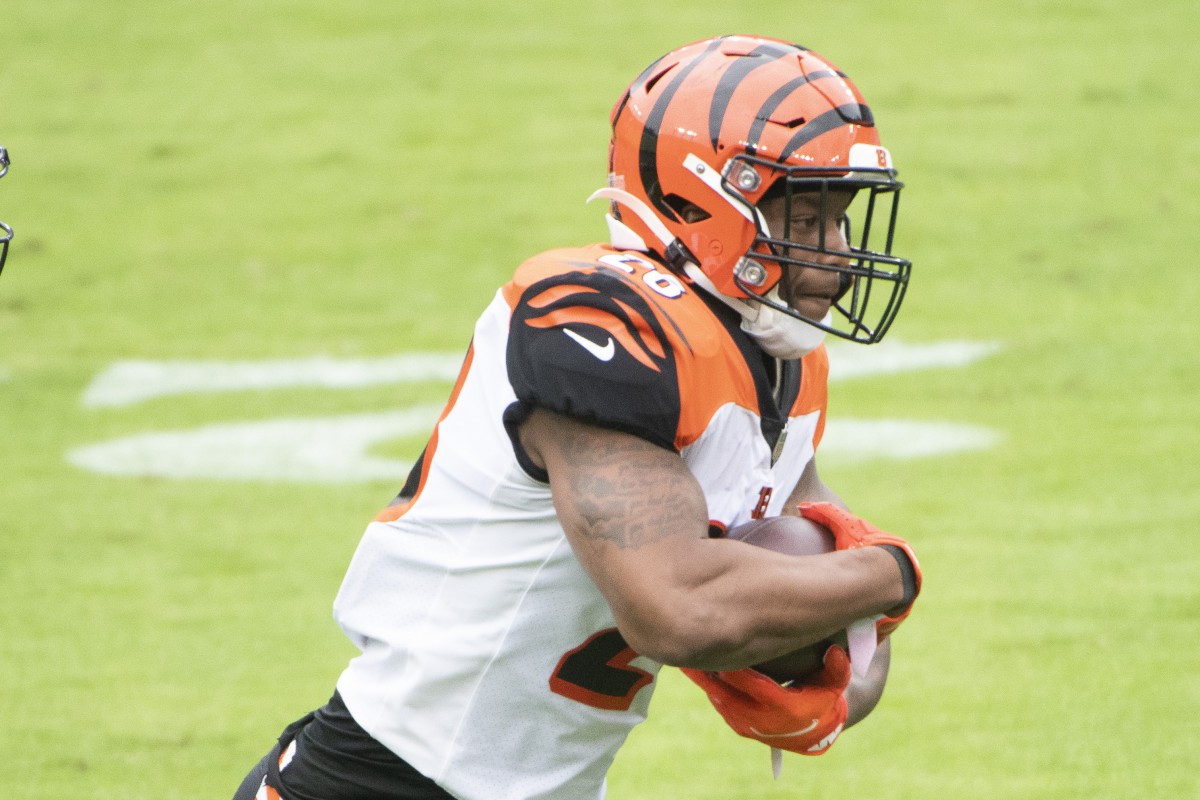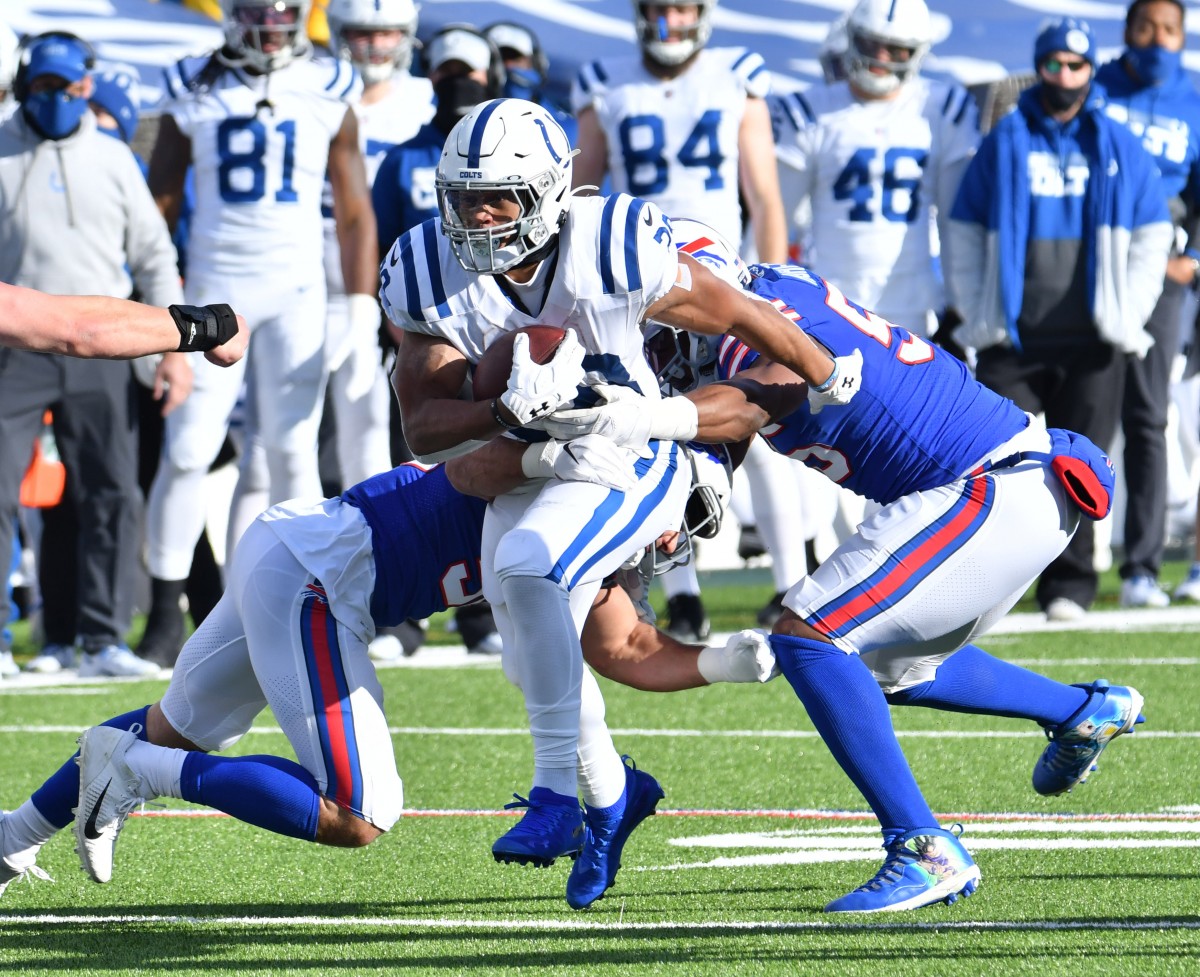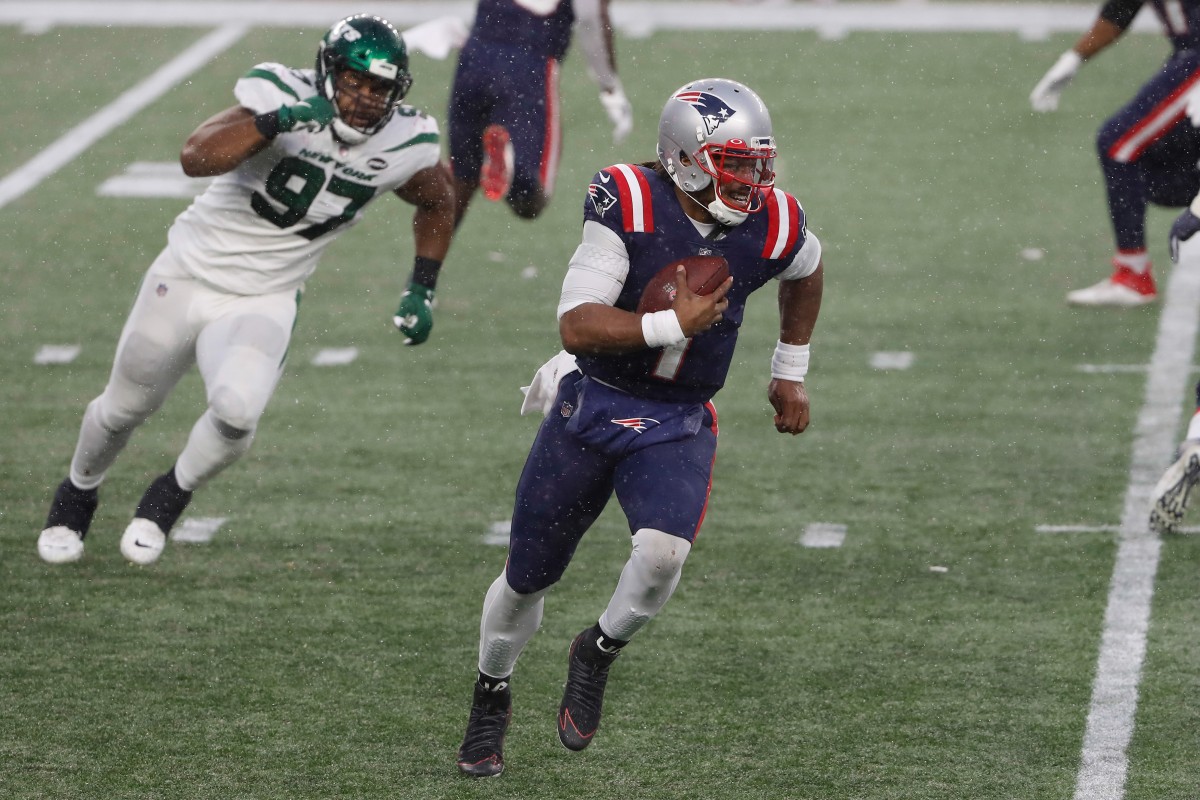Keeping up with injuries entering the fantasy football draft season is tremendously important. The most notable names from the traditional pool of skill players are in focus below.
Quarterbacks

Joe Burrow, Cincinnati Bengals: The 2020 No. 1 overall pick is on track to be just fine for Week 1, and he has been throwing for several weeks now.
Trevor Lawrence, Jacksonville Jaguars: A labral repair to the non-throwing shoulder of this spring’s top draft choice didn’t hamper his ability to get onto the field for organized team activities (OTAs). He performed well, according to media reports.
Mac Jones, New England Patriots: The Patriots’ 2021 first-rounder wore a compression sleeve on his right calf in OTAs and was witnessed limping at times. The injury is not believed to be serious.
Dak Prescott, Dallas Cowboys: Less than a year after a gruesome ankle fracture, Prescott is expected to be a full participant in July’s training camp, according to head coach Mike McCarthy.
Tom Brady, Tampa Bay Buccaneers: The ageless wonder was operated on in the offseason for a minor knee clean-up. As expected, Brady is already back on the field and throwing.
Cam Newton, New England Patriots: The long-time Carolina Panther suffered a bruised bone in his throwing hand in practice but is getting better, according to head coach Bill Belichick. The injury is not serious, and Newton even finished practice that day, so expect him back before training camp.
Running backs

Saquon Barkley, New York Giants: The star fantasy back is returning from knee reconstruction after tearing the anterior cruciate ligament (ACL) in his right knee. The team won’t hurry him back, so gamers are unlikely to see Barkley before training camp. It won’t be much of a surprise if he is held out into the preseason, and there’s even a reasonable chance his early-season workload will be deliberately restricted.
Tarik Cohen, Chicago Bears: Cohen also tore an ACL last year and is in the strengthening phase of his recovery. The Bears expect their third-down back to be ready for the start of training camp.
James Conner, Arizona Cardinals: An off-road vehicle accident resulted in surgery to repair what was described as an injury similar to turf toe. Conner is expected to be available for training camp, barring any setbacks.
Jeff Wilson Jr., San Francisco 49ers: A torn meniscus resulted in knee surgery in late May, and Wilson will be on the shelf up to six months, putting his Week 1 availability in serious doubt. Keep tabs on his situation as the summer unfolds.
Zack Moss, Buffalo Bills: Ankle surgery in the offseason has the second-year rusher on a timeline that should have him available in training camp. He’s probably best viewed as being “questionable” for the start of it.
Marlon Mack, Indianapolis Colts: The fifth-year back is returning from a torn Achilles tendon. He has been participating in “athletic activities” but has not actually practiced in OTAs. The prognosis for such a recovery is roughly nine months, which would be the middle of June.
[lawrence-related id=458852]
Rex Burkhead, Houston Texans: The versatile veteran suffered a torn ACL in late November and opted to sign with the Texans this offseason. He may have to begin the year on the Physically Unable to Perform list, although it probably doesn’t matter with such a crowded backfield.
Raheem Mostert, San Francisco 49ers: A minor knee issue has him sitting out of OTAs, but the local-area media reports put the speedy rusher on track for training camp.
Antonio Gibson, Washington Football Team: As a rookie in 2020, Gibson suffered a late-season toe injury that is not quite fully healed. It didn’t require surgery, and Gibson is being mindful of not suffering a setback. He has been going at full speed and cutting in OTAs, so this doesn’t sound like it should be of much concern for fantasy purposes.
Wide receivers

Odell Beckham Jr., Cleveland Browns: The maligned star suffered an ACL tear last October and is “right on track,” according to Akron Beacon Journal writer Nate Ulrich. OBJ has posted videos on social media showing his trademark athleticism is still intact, so there’s scant reason to be overly concerned about his health … a sheer lack of chemistry with his quarterback is the larger worry.
Courtland Sutton, Denver Broncos: ACL recovery usually takes about nine to 12 months, and it’s not quite as problematic for a receiver of Sutton’s profile. It would be more damning for a juking running back or a joystick receiver, like Tyreek Hill. Sutton suffered the injury in Week 1 and should be just fine, physically speaking, heading into training camp. The team could take it easy on him, though.
Preston Williams, Miami Dolphins: The once-promising career start has been totally derailed by serious injuries. Moreover, the Dolphins restocked the WR cupboard this offseason in a way that could put Williams on the roster bubble. It’s unclear what specifically was wrong with Williams’ foot after missing eight games last year, but he is back on the practice field in OTAs.
Jalen Hurd, San Francisco 49ers: Hurd is coming back from an ACL tear and is rehabbing on the side during OTAs. The more serious hurdle is cracking the top three at his position in an offense that really doesn’t utilize the spot in a meaningful way.
Corey Davis, New York Jets: The new Jet addition suffered a shoulder injury in practice June 1. As of June 11, there is no new update on his status, other than the situation being labeled a “minor strain.”
KJ Hamler, Denver Broncos: Despite putting on 11 pounds in effort to become more durable after playing last year at 170 pounds, Hamler tweaked his hamstring in practice June 1 and is taking it easy.
Dazz Newsome, Chicago Bears: The undersized but agile rookie broke his collarbone in OTAs but should be ready for training camp after undergoing surgery.
Brandon Aiyuk, San Francisco 49ers: A minor groin injury had the second-year receiver sit out Wednesday, June 2, and he remained sidelined for precautionary reasons as of the most recent update on June 8.
[lawrence-related id=458695]
A.J. Brown, Tennessee Titans: The standout pass-catcher underwent clean-up surgery on both knees in January and will be A-OK for training camp.
Antonio Brown, Tampa Bay Buccaneers: AB went under the knife in mid-March to clean up debris in his knee and is about two weeks away from returning to the field.
Calvin Ridley, Atlanta Falcons: The new WR1 in Atlanta underwent minor foot surgery June 9 and will miss the rest of minicamp, but he should be just fine in time for training camp.
Amari Cooper, Dallas Cowboys: Cooper (ankle) encountered an irritation while running in late May and will need several weeks of rest, which could put being on the field at the start of training camp in jeopardy for the veteran wideout.
Curtis Samuel, Washington Football Team: A strained groin suffered in OTAs has Samuel on the sidelines for the time being. The injury doesn’t sound serious, per reports, although the coaching staff should take it easy on him for now.
Tight ends

Blake Jarwin, Dallas Cowboys: Yet another player recovering from an ACL tear, Jarwin took part in some drills during late-May team activities. The team will take it easy on him as a precautionary measure.
Albert Okwuegbunam, Denver Broncos: The 2020 fourth-rounder blew out his ACL last season and is coming along on schedule, but he will likely miss the opening of July’s training camp.
O.J. Howard, Tampa Bay Buccaneers: Howard suffered a torn Achilles tendon last year late in his fourth appearance, and he’s on track to be ready for camp. Bruce Arians said Howard is “really close” as of June 8.
Hunter Henry, New England Patriots: The former LA Charger exited practice early Thursday, June 10, after getting his ankle/foot looked at and re-taped by trainers. While the injury was described as minor, according to NFL insider Ian Rapoport, the specific issue is unclear at this time.
Kyle Rudolph, New York Giants: The former Minnesota Viking suffered a foot injury in 2020. It was believed the issue would not require surgery, but the physical he took prior to signing with the Giants determined a procedure was necessary. He is not supposed to miss any action.





